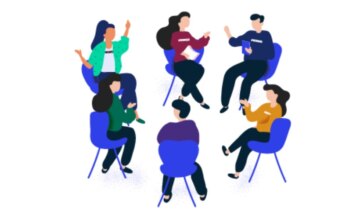“You Like Me. Right Now, You Like Me!” – How to Turn Your Webinar Data Into Business Development Action Items

I wrote in a recent post on how to identify qualified leads. Webinars present a host of opportunities for focused business development on qualified leads that, sadly, some firms fail to capitalize on.
(The key phrase here is focused business development by the way. Some of the actions below, like #1, can be done with the help of your business development team; whereas; others – like #3, the phone call – should be done by you and should be focused on just a handful of truly engaged prospects.)
Marketing and business development are about “now.”
The headline of this piece is a nod to actress Sally Field, who, after a somewhat unorthodox career, won an Oscar in 1984 for her role in “Places in the Heart.” There are so many marketing lessons there, but I’ll focus on two: “like,” and, most importantly, “now.”
Marketing and business development are about “now.” When you need Q-Tips or FCPA advice, you need it. When you don’t, you don’t. That’s why it’s important to act in a timely manner. (I also addressed this recently in another post on how law firms can establish expertise and make connections using timely analysis of top news.)
I’m going to assume that you understand the value of post-program data and can’t wait to jump on it. Leveraging my years of leading successful sales teams, I have some ideas about outreach to qualified leads:
1. “Buff” Paper
This is a write-up that you market and release as a select, invitation-only product. It should be a short (hence buff, not white) summary—not the slides—of the content you covered in the program. When sending, stress the exclusivity of the product. Make sure you include a call to action: “If we can help you think through this issue, please contact me.”
2. Private Follow-On Education
Bespoke on-site CLE or invitation-only webinars are ideal for targeting high-value prospects and ready-to-sign prospects. Remember, these are people who have expressed a distinct interest in your content and therefore your services. A bespoke online program is magnitudes more effective (and cost-effective) than rallying a huge team to respond to an RFP.
3. The Old-Fashioned Phone Call
What sweet nostalgia, like homemade ice cream. Call these individuals and thank them for attending, even if you just get their voicemail. Resist resorting to email, though make it short if you hit voicemail (less than one minute). Focus on people who fulfill two or more criteria (see the previous post). They will be disarmed and charmed by your personal approach.
4. Personally Ask for Feedback
Attendees will be flattered and impressed when you personally sought them out to learn what else they would like to learn about the topic. You are reinforcing that they are your complete focus and a valuable source of information regarding the information and services you provide.
5. Sophisticated Cross-Selling
Consider this message. “Hi, Michaela Johnson here of Jackson & Johnson. I notice that you recently attended an online seminar on the FCPA. I realize that our firm doesn’t currently provide services to your company in this area, but I would welcome the chance to help you evaluate whether you are getting what you need from your current provider, or help you find the right provider. Please let me know if I can be of use.”
Fact is, that’s a pretty generic message. You’re on the right track, cross-selling based on an identified need. But the message matters. Consider a more targeted message instead, one that shows you know something about your target:
“…I noticed you asked a few FCPA-related questions and signified an interest in compliance matters in your survey answers. I’d love to discuss further with you to ensure your questions were answered.”
These are just a few of the many ways to interact with qualified leads. The list has no bounds if you approach it with savvy and creativity. That said, if you’d like to talk about where to take your efforts beyond your webinars, and how to approach your data, I’d welcome the conversation. Best, Sam
